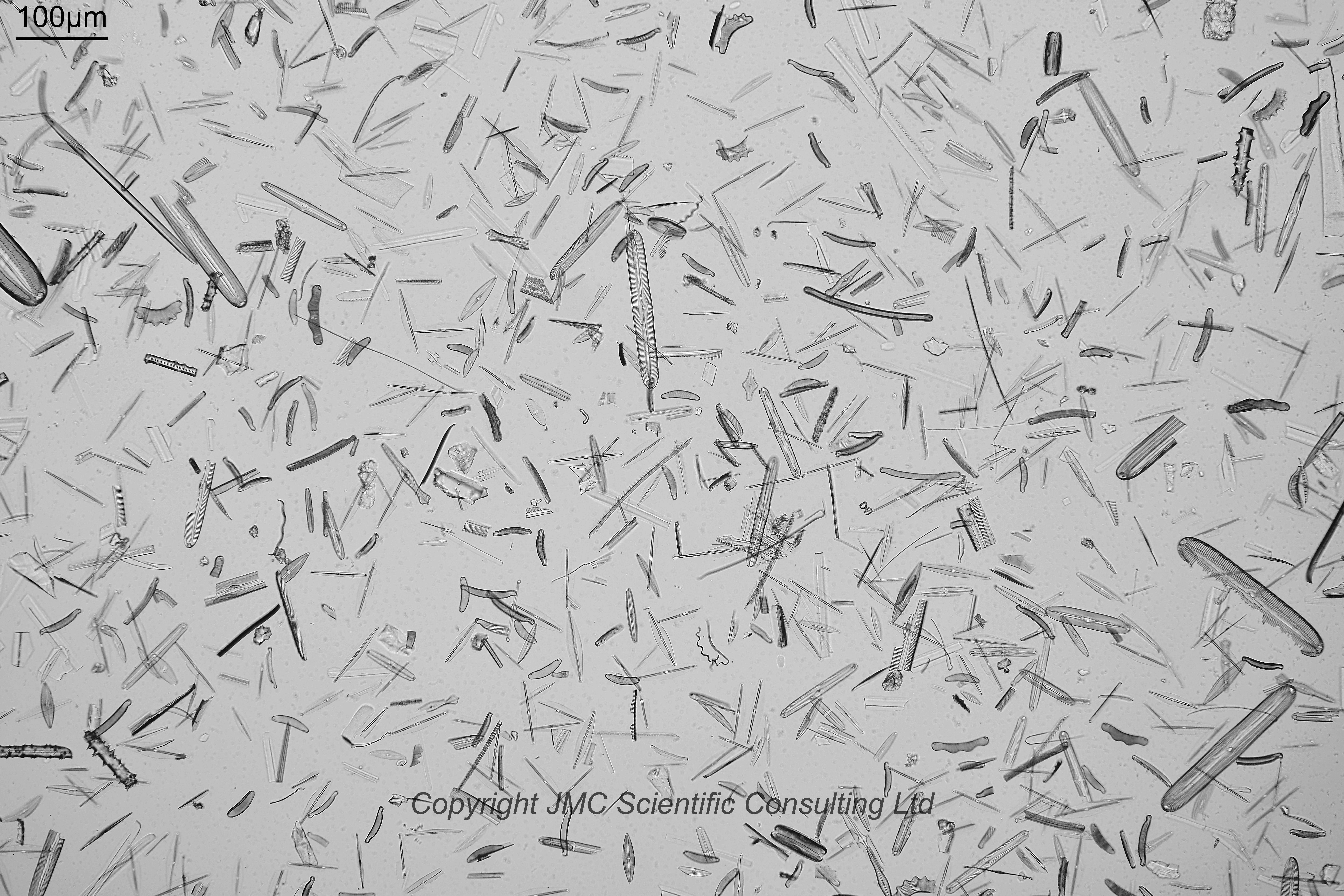



A strew slide from Loch na Cuilc, Bergera, Isle of Lewis, Scotland. Great range of species present. Fossil freshwater. Collected 31/5/1971. Mounted in Hyrax and dated December 1984. Prepared by Bernard Hartley, and has one of his gold stickers on it. Olympus BHB microscope using 450nm LED light. I chose a couple of diatoms for high magnification imaging. 63x Leitz Pl Apo 1.4 objective, oil immersion. Olympus Aplanat Achromat condenser, oil immersion, oblique lighting. 2.5x Nikon CF PL photoeyepiece. Monochrome converted Nikon d850 camera. Image stacks prepared in Zerene (Pmax).
Brachysira follis. Mentioned in Hartley, B., Ross, R. and Williams, D.M. (1986) A check-list of the freshwater, brackish and marine diatoms of the British Isles and adjoining coastal waters. Journal of the Marine Biological Association of the United Kingdom 66(3): 531-610. Synonyms: Anomoeoneis follis (Ehrenb.) Cleve 1895, Navicula serians var. follis (Ehrenb.) Cleve and J.D.Möller 1879. 23 images stacked.
Semiorbis sp.? 24 images stacked. It’s a bit too ‘oblique’ for my liking if I’m being picky. I initially thought this was a Eunotia so, but it doesn’t look like that to me, so have gone with Semiorbis. However I have not seen any quite like this yet, so am unsure as to species.
A few words about the location. This is from page 40 of Bernard Hartley’s Sample and Strew Slide Collection PDF (from here);
“LOCH-NA-CUILC. (Samples 301, 302, 303, 304 and 311), Kirkibost, Bernera, Isle of Lewis, is situated at Croft No. 5, Kirkibost, which is owned by an elderly gentleman named Mr. Norman MacLennon. As croft owner, he has complete rights over the land, and it is said that he vetoed and stopped further work of excavating on his land for diatomite; even though the work was sponsored by the Highland Development Board under the direction of Mr. John Rollo. Mr Donald MacDonald of 11 Kirkibost, Bernera, nr. Stornoway, Isle of Lewis accompanied Betty and myself to the site and pointed out an area of about 6ft by 5ft, which had tentatively been excavated for diatomite. He also pointed out a small 3ft diameter x 6 inches high spoil heap of yellow-brown clay-like earth which had been excavated from the workings. It varied in shade and colour from grey through cream to a rusty red-oxide colour. The adjoining 18 inches wide x 12 inches deep man-made diversion stream was well covered with a peaty red-oxide coloured soft coating which contained very few diatoms in it. The Loch was bordered by a small rush or sedge which was in flower and looked very attractive. I gathered later from D. MacDonald that the Gaelic name for this plant was ‘Cuilc’. On the adjoining hillside there were many orchids with spotted leaves. Some with pale purple flowers and others almost white. I believe that one is a particular Hebridean variety. Later we met Norman MacDonald who was a fine young man aged about 18. He said that his father had worked on digging the Loch na Cuilc and the hole was about 5 or 6 feet square and some 4 feet deep, so far as he could remember. He recalled that it was about 7 years ago – on 1964. “It was only on the go for a few months before Norman MacLennon stopped it”.”
There is a bit about Croft 5 here where it mentions the presence of a small, diatomite deposit, not commercially viable, being present along with a small loch, however I have not been able to pinpoint the precise location on a map.
This slide, 1757, is also mentioned on page 208 as being “cleaned by K-D. Kemp December 1984 and finished off by B. Hartley.”.
The slide says: ‘See “The Microscope”, Volume 13, No. 3, 1961.’. This refers to Carter, J.R. (1961). Loch Na Cuilc, a preliminary notice. The Microscope, Diatom Notes 13(3): 74-78. Note this often seen misspelled as ‘Cuic’.